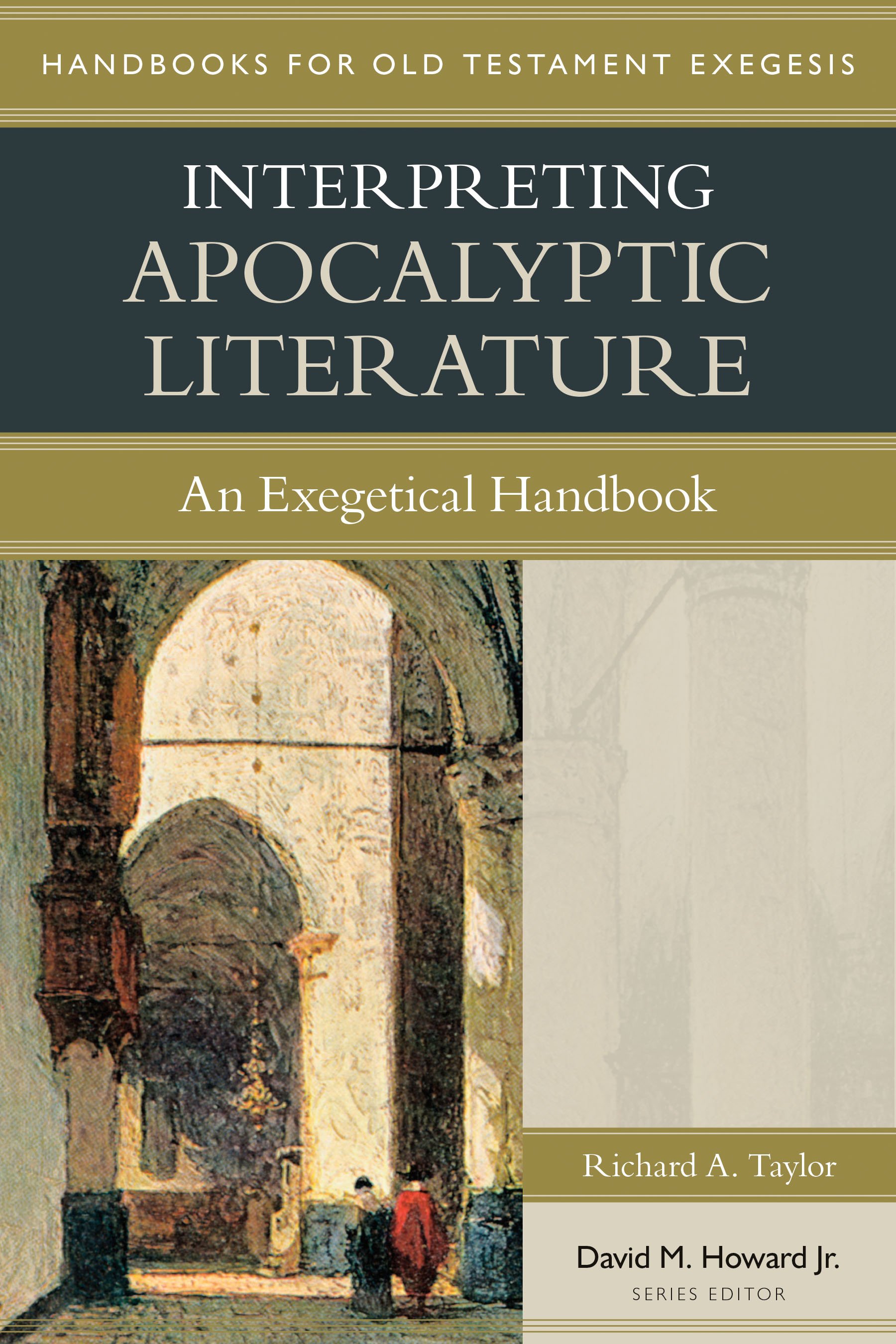
Because I am a glutton for punishment, when Kregel Academic offers books, I grab hold of them. Especially when they are on matters far outside my experience base. They provide a book, I learn a good bit, and then you get to read my reactions.
First things first on today’s book: Interpreting Apocalyptic Literature by Richard A. Taylor is the next entry in the Handbooks for Old Testament Exegesis series from Kregel Academic. Series editor is David M. Howard, Jr.. Taylor is Senior Professor of Old Testament Studies at Dallas Theological Seminary and the director of their PhD Program. His work demonstrates a breadth of knowledge in the Old Testament and the surrounding world of the times. And, given the doctrinal position of Dallas Theological Seminary, one can see his opening position on Biblical matters. He will approach the text with the view that the Bible portions referred to are nothing less than the Word of God Himself.
Now, on to the book. Interpreting Apocalyptic Literature begins with an explanation of what apocalyptic literature is. Keep in mind that this book, along with the rest of its series, are second-level works on interpreting the Bible. Before you come here, you would do well to pick up a basic introductory work on Biblical interpretation, like How to Read the Bible for All Its Worth or Grasping God’s Word. (Or Kregel’s Initiation to Biblical Interpretation. They don’t require me to plug another book.) Those introductory works will help you see the basics of seeing literary genre in the Biblical text.
From there, Taylor goes on to look at the major themes in apocalyptic literature from the Old Testament era. He does NOT limit his scope to only Biblical texts. Instead, he takes in works from the Apocrypha and other non-canonical works that date to the era. This book is focused on learning the concepts and helping you, the reader, see the overall apocalyptic views at the time. Special attention is paid to what I would consider the “inspired” texts, but Taylor does not neglect that other literature aids in understanding those texts.
It is this broadening of the pool that is the book’s greatest strength. For too long, many of us have approached the Bible as if it sprang, completely isolated, from the fingers of the writers. The writers, though, wrote while people read other writings as well. Those writings influenced the text and knowing a bit more illuminates the text better for us. One good example is seeing that apocalyptic writings were typically anonymous—so the author does not WANT to be known. Yet we tend to invest substantial time in trying to figure that out! Those authors never intended you to know, and their original audience would not have done so.
Taylor also gives a good look at the purpose of such writings. The needs to be faithful, to face difficulties, and so forth. This includes some guides to preaching the text. A good portion of that guide is universal preaching guidance: pay attention to structure, remember you’re not preaching to Israelites in Babylon, and so forth. It’s still good advice to be reminded of.
In all, Taylor gives a good look at the right way to deal with the apparently future prophecies that are apocalypses in the Old Testament era. His guidance helps pull the interpretation back toward sane and reasonable, without trying to count the horns on the President’s desk (or head) and instead focusing on what God Himself is saying in the text.
A good entry in a helpful series.
Book provided by Kregel Academic.


No comments:
Post a Comment
To deal with SPAM comments, all comments are moderated. I'm typically willing to post contrary views...but I also only check the list once a day, so if you posted within the last 24 hours, I may not be to it yet.